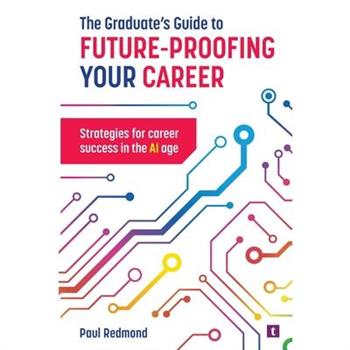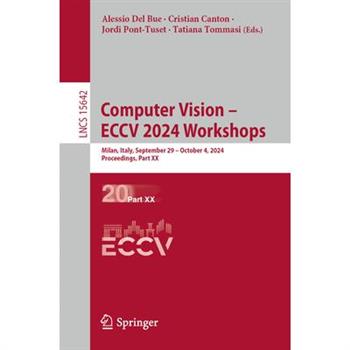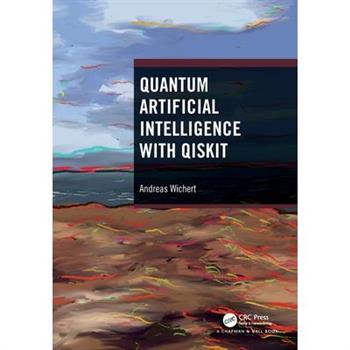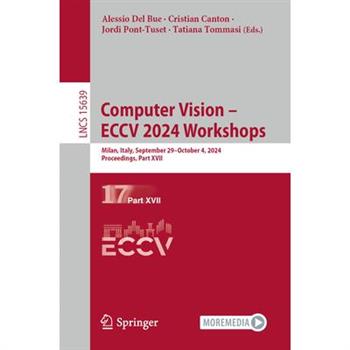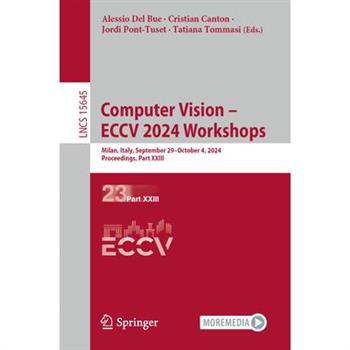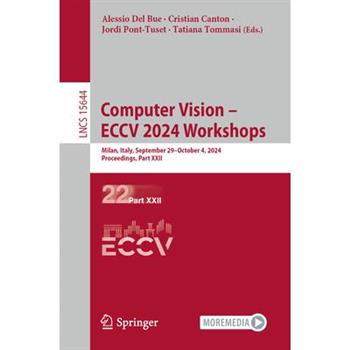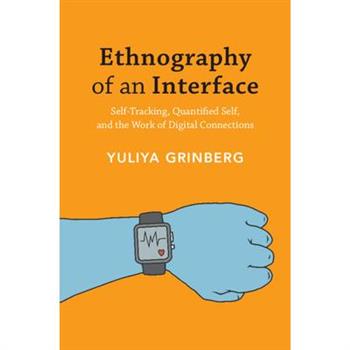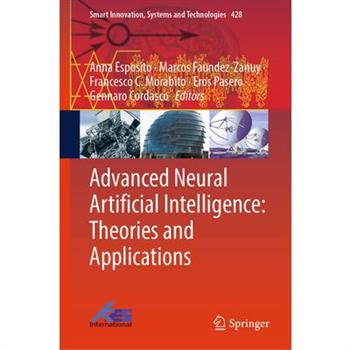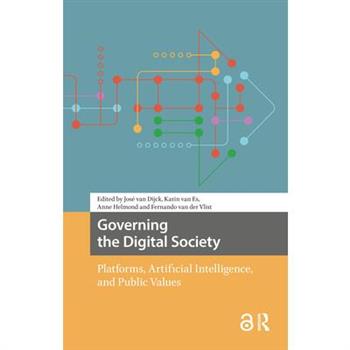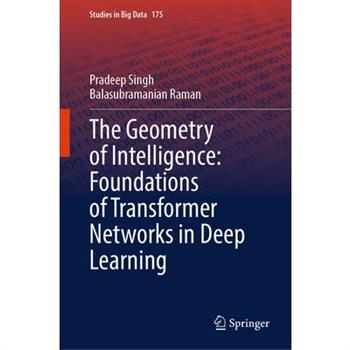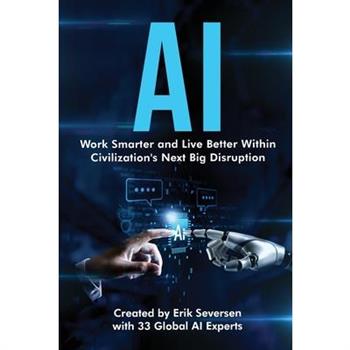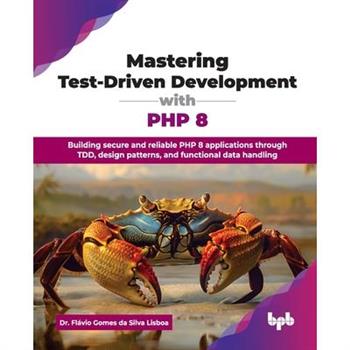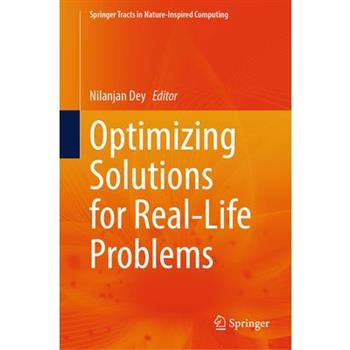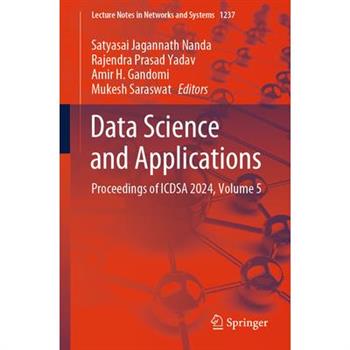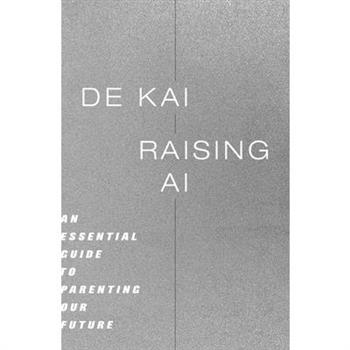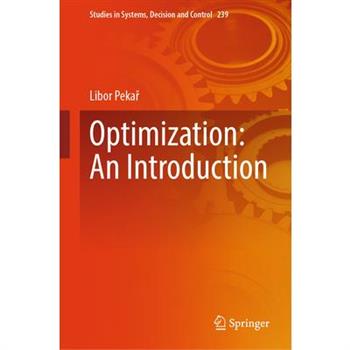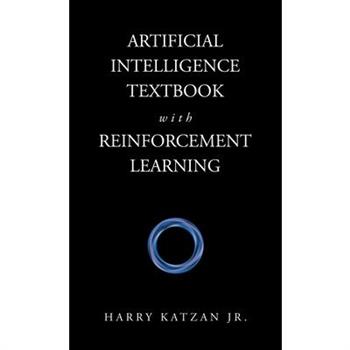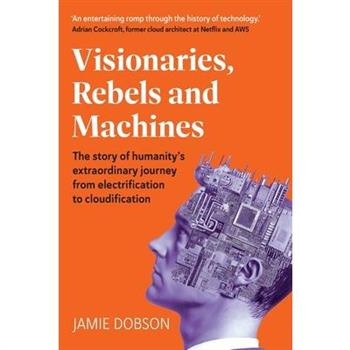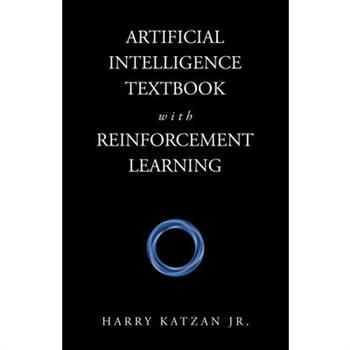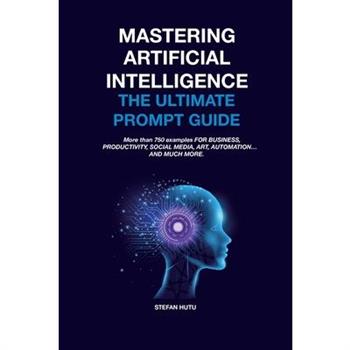The Graduate’s Guide to Future-Proofing your Career
Technology wants your job - master the skills needed to navigate the AI revolution and boost your career resilience! In an age where artificial intelligence is reshaping the job market, staying ahead requires more than just traditional skills. The Graduate's Guide to Future-Proofing your Career is your essential manual for thriving in this transformative AI era.Dr Paul Redmond, a leading expert on graduate employability, provides a compelling exploration of how AI is redefining careers. This insightful guide, backed by the latest research, reveals how to master the skills needed for future job resilience.Identify and cultivate essential skills: Learn which abilities will keep you indispensable.Continuous learning and adaptation: Embrace a mindset of lifelong learning to stay relevant.Networking and personal branding: Harness the power of connections in the digital age.Embrace innovation: Understand how to work alongside AI to unlock new opportunities.Gain advantage: Use the essential strategies developed in five 'killer apps' to flourish in an AI age.With practical advice, real-world examples and actionable strategies, this book prepares you to seize the opportunities presented by AI and robotics. Don't just plan for the future - create it!
Design, User Experience, and Usability
This six-volume set LNCS 15794-15799 constitutes the refereed proceedings of the 14th International Conference on Design, User Experience, and Usability, DUXU 2025, held as part of the 27th International Conference on Human-Computer Interaction, HCII 2025, in Gothenburg, Sweden, during June 22-27, 2025. The total of 1430 papers and 355 posters included in the HCII 2025 proceedings was carefully reviewed and selected from 7972 submissions.The six volumes cover the following topics: Part I: Information design and visualization; emotional interaction and persuasive design; and interactive systems and user behavior.Part II: UX design and evaluation methodologies; inclusive design and accessible experiences; and product and industrial design.Part III: Design and the digital transmission of culture; design for arts and creativity; and designing for health and therapeutic experiences.Part IV: Consumer experience and service design; design and evaluation of technology-enhanced learning; and UX in automotive and transportation.Part V: Design education and professional practice; and human-centered design and interactive experiences.Part VI: AI and the future of UX design; and UX in AI and emerging technologies.
Computer Vision - Eccv 2024 Workshops
The multi-volume set LNCS 15623 until LNCS 15646 constitutes the proceedings of the workshops that were held in conjunction with the 18th European Conference on Computer Vision, ECCV 2024, which took place in Milan, Italy, during September 29-October 4, 2024. These LNCS volumes contain 574 accepted papers from 53 of the 73 workshops. The list of workshops and distribution of the workshop papers in the LNCS volumes can be found in the preface that is freely accessible online.
Computer Vision - Eccv 2024 Workshops
The multi-volume set LNCS 15623 until LNCS 15646 constitutes the proceedings of the workshops that were held in conjunction with the 18th European Conference on Computer Vision, ECCV 2024, which took place in Milan, Italy, during September 29-October 4, 2024. These LNCS volumes contain 574 accepted papers from 53 of the 73 workshops. The list of workshops and distribution of the workshop papers in the LNCS volumes can be found in the preface that is freely accessible online.
Computer Vision - Eccv 2024 Workshops
The multi-volume set LNCS 15623 until LNCS 15646 constitutes the proceedings of the workshops that were held in conjunction with the 18th European Conference on Computer Vision, ECCV 2024, which took place in Milan, Italy, during September 29-October 4, 2024. These LNCS volumes contain 574 accepted papers from 53 of the 73 workshops. The list of workshops and distribution of the workshop papers in the LNCS volumes can be found in the preface that is freely accessible online.
Design, User Experience, and Usability
This six-volume set LNCS 15794-15799 constitutes the refereed proceedings of the 14th International Conference on Design, User Experience, and Usability, DUXU 2025, held as part of the 27th International Conference on Human-Computer Interaction, HCII 2025, in Gothenburg, Sweden, during June 22-27, 2025. The total of 1430 papers and 355 posters included in the HCII 2025 proceedings was carefully reviewed and selected from 7972 submissions.The six volumes cover the following topics: Part I: Information design and visualization; emotional interaction and persuasive design; and interactive systems and user behavior.Part II: UX design and evaluation methodologies; inclusive design and accessible experiences; and product and industrial design.Part III: Design and the digital transmission of culture; design for arts and creativity; and designing for health and therapeutic experiences.Part IV: Consumer experience and service design; design and evaluation of technology-enhanced learning; and UX in automotive and transportation.Part V: Design education and professional practice; and human-centered design and interactive experiences.Part VI: AI and the future of UX design; and UX in AI and emerging technologies.
Quantum Artificial Intelligence with Qiskit
Quantum Artificial Intelligence (QAI) is a new interdisciplinary research field that combines quantum computing with Artificial Intelligence (AI), aiming to use the unique properties of quantum computers to enhance the capabilities of AI systems. Quantum Artificial Intelligence with Qiskit provides a cohesive overview of the field of QAI, providing the tools for readers to create and manipulate quantum programs on devices as accessible as a laptop computer.Introducing symbolical quantum algorithms, sub-symbolical quantum algorithms, and quantum Machine Learning (ML) algorithms, this book explains each process step by step with associated Qiskit listings. All examples are additionally available for download at https: //github.com/andrzejwichert/qai.Allowing readers to learn the basic concepts of quantum computing on their home computers, this book is accessible to both the general readership as well as students and instructors of courses relating to computer science and AI.
Software Performance Engineering
DESCRIPTION This book introduces the concept of Software Performance Engineering throughout the development process. Software performance yields from a wide range of factors: from hardware through coding standards, runtime frameworks, design patterns, quality assurance and testing, and system architectural patterns, to name a few. This book takes a holistic view of the entire software development lifecycle, learning each of its phases, to understand the technologies, techniques, and tools available, and how we can use them to improve the behavior and performance of our system.Technical hands-on chapters introduce tools and libraries, showing practical examples of how to set them up and use them with ease, while theoretical chapters include comprehensive information and deep explanations of a broad selection of concepts, all accompanied by relevant charts, screenshots, and code samples. Key sections cover performance monitoring design using tools like OpenTelemetry, detailed code profiling techniques, and best practices for performance testing and test data management. You will also learn about the performance benchmarking types, KPIs/metrics analysis, and behavioral correlation.Upon completing this book, you will possess the practical skills to proactively integrate performance into every development stage, diagnose complex issues, and manage system performance effectively post-production. Code snippets are mainly written in Python, as the book focuses on current technologies, delving into concepts of cloud computing, design patterns, and best practices, in order to learn how to optimize the entire software delivery process, end-to-end.WHAT YOU WILL LEARN● Define performance requirements, metrics, and KPIs.● Useful design patterns and bad practices to avoid.● Utilize cloud services for performance.● Tools for optimizing code and testing.● Live telemetry, monitoring, measuring, dashboarding, and predicting.WHO THIS BOOK IS FORThis book is for performance engineers, software developers, QA engineers, and solution architects aiming to identify bottlenecks and optimize application performance. Readers will benefit from prior knowledge of distributed systems, microservices, and basic non-functional engineering concepts.
Intelligent Human Computer Interaction
This volume LNCS 15557 constitutes the refereed proceedings of 16th International Conference on Intelligent Human Computer Interaction, IHCI 2024, held in Twente, The Netherlands, during November 13-16, 2024. The 37 full papers and 2 short papers were carefully reviewed and selected from 107 submissions. They were categorized under the topical sections as follows: HCI across domains Augmented & virtual reality Usability & UX Healthcare & clinical AI Centric HCI
Differential Privacy in Artificial Intelligence
Differential Privacy in Artificial Intelligence: From Theory to Practice is a comprehensive resource designed to review the principles and applications of differential privacy in a world increasingly driven by data. This book delves into the theoretical underpinnings of differential privacy, its use in machine learning systems, practical implementation details, and its broader social and legal ramifications. Intended as a primer and a deep dive, it lays a solid foundation by introducing essential concepts and mechanisms critical to understanding differential privacy. From theoretical foundations to practical application, the book is organized into five distinct parts. Part I reviews the foundational notions of differential privacy in the central and local models, delving into composition and privacy amplification. The discussion extends to practical strategies for data release and the creation of synthetic data, which is essential for real-world applications. Part II focuses on the application of differential privacy in optimization and learning, examining the integration of privacy measures in machine learning, including private optimization methods and private federated learning.Beyond technical applications, the book highlights the use of differential privacy in critical sectors such as healthcare and energy, and discusses its implications in image and video analysis in Part III. Part IV provides a thorough look at the tools and challenges in deploying privacy-preserving models, including insights into programming frameworks and machine learning tools. Finally, Part V addresses the societal impact of differential privacy, discussing its intersection with public policy, law, fairness, and bias. Targeted at researchers, practitioners, and policymakers, Differential Privacy in Artificial Intelligence: From Theory to Practice aims to be an essential guide for anyone committed to advancing privacy in the digital age, providing the knowledge needed to develop and deploy effective and ethical privacy solutions across various domains.
Computer Vision - Eccv 2024 Workshops
The multi-volume set LNCS 15623 until LNCS 15646 constitutes the proceedings of the workshops that were held in conjunction with the 18th European Conference on Computer Vision, ECCV 2024, which took place in Milan, Italy, during September 29-October 4, 2024. These LNCS volumes contain 574 accepted papers from 53 of the 73 workshops. The list of workshops and distribution of the workshop papers in the LNCS volumes can be found in the preface that is freely accessible online.
Artificial Intelligence
An authoritative and accessible one-stop resource, the first edition of An Introduction to Artificial Intelligence presented one of the first comprehensive examinations of AI. Designed to provide an understanding of the foundations of artificial intelligence, it examined the central computational techniques employed by AI, including knowledge representation, search, reasoning and learning, as well as the principal application domains of expert systems, natural language, vision, robotics, software agents and cognitive modelling. Many of the major philosophical and ethical issues of AI were also introduced. This new edition expands and revises the book throughout, with new material to augment existing chapters, including short case studies, as well as adding new chapters on explainable AI, big data and deep learning, temporal and web-scale data, statistical methods and data wrangling. It expands the book's focus on human-centred AI, covering gender, ethnic and social bias, the need for transparency, intelligent user interfaces, and designing interactions to aid machine learning. With detailed, well-illustrated examples and exercises throughout, this book provides a substantial and robust introduction to artificial intelligence in a clear and concise coursebook form. It stands as a core text for all students and computer scientists approaching AI.You can also visit the author website for further resources: https: //alandix.com/aibook/.
Pattern Recognition. Icpr 2024 International Workshops and Challenges
This 6-volume set LNCS 15614-15619 constitutes the proceedings of the ICPR 2024 International Workshops and Challenges held under the umbrella of the 27th International Conference on Pattern Recognition, ICPR 2024, which took place in Kolkata, India, during December 1-5, 2024. The 183 full papers presented in these 6 volumes were carefully reviewed and selected from numerous submissions. The 21 ICPR 2024 workshops addressed problems in pattern recognition, artificial intelligence, computer vision, and image and sound analysis, and the contributions reflect the most recent applications related to healthcare, biometrics, ethics, multimodality, cultural heritage, imagery, affective computing, and de-escalation.
Computer Vision - Eccv 2024 Workshops
The multi-volume set LNCS 15623 until LNCS 15646 constitutes the proceedings of the workshops that were held in conjunction with the 18th European Conference on Computer Vision, ECCV 2024, which took place in Milan, Italy, during September 29-October 4, 2024. These LNCS volumes contain 574 accepted papers from 53 of the 73 workshops. The list of workshops and distribution of the workshop papers in the LNCS volumes can be found in the preface that is freely accessible online.
Computer Vision - Eccv 2024 Workshops
The multi-volume set LNCS 15623 until LNCS 15646 constitutes the proceedings of the workshops that were held in conjunction with the 18th European Conference on Computer Vision, ECCV 2024, which took place in Milan, Italy, during September 29-October 4, 2024. These LNCS volumes contain 574 accepted papers from 53 of the 73 workshops. The list of workshops and distribution of the workshop papers in the LNCS volumes can be found in the preface that is freely accessible online.
Social Computing and Social Media
This book constitutes the refereed proceedings of the 17th International Conference on Social Computing and Social Media, SCSM 2025, held as part of the 27th HCI International Conference, HCII 2025, which took place in Gothenburg, Sweden, during June 22-27, 2025. A total of 1430 papers and 355 posters included in the HCII 2025 proceedings was carefully reviewed and selected from 7972 submissions. The SCSM 2025 proceedings were organized in the following topical sections- Designing and Developing Social Interactions, Social Media in Learning and Education, Supporting Communication and Psychological Well-Being, User Behavior and Experience in Social Media, and, AI and Social Network Analysis.
Cisa Certified Information Systems Auditor Study Guide and Practice Tests Bundle: Covers 2024 Exam Objectives
Two bestselling CISA guides in one serious study set This value-packed packed set for the serious CISA certification candidate combines the all-new CISA Certified Information Systems Auditor Study Guide: Covers 2024-2029 Exam Objectives with a new collection of Practice Exams and online practice test tool to give you the best preparation ever for the high-stakes CISA credential. The CISA Certified Information Systems Auditor Study Guide: Covers 2024-2029 Exam Objectives provides comprehensive and accessible test preparation material for the updated CISA exam, which now consists of 150 questions testing knowledge and ability on real-life job practices leveraged by expert professionals. You'll efficiently and effectively prepare for the exam with online practice tests and flashcards as well as a digital glossary. The concise and easy-to-follow instruction contained in the 2024-2029 CISA Study Guide covers every aspect of the exam. This study guide helps readers prepare for questions across the five domains on the test: Information System Auditing Process; Governance and Management of IT; Information Systems Acquisition, Development, and Implementation; Information Systems Operation and Business Resilience; and Protection of Information Assets. Add to that the CISA Certified Information Systems Auditor Practice Tests with more questions for each of the 2 domains, 2 more practice exams, and more than 700 questions total and you'll be as ready as you can be to prove your CISA knowledge. This study guide and practice tests set shows readers how to be ready for these on the CISA exam: Understand principles, best practices, and pitfalls of cybersecurity, which is now prevalent in virtually every information systems role Protect and control information systems and offer conclusions on the state of an organization's IS/IT security, risk, and control solutions Identify critical issues and recommend enterprise-specific practices to support and safeguard the governance of information and related technologies Prove not only competency in IT controls, but also an understanding of how IT relates to business Includes 1 year free access to the Sybex online learning center, with chapter review questions, full-length practice exams, hundreds of electronic flashcards, and a glossary of key terms, all supported by Wiley's support agents who are available 24x7 via email or live chat to assist with access and login questions
Computer Vision - Eccv 2024 Workshops
The multi-volume set LNCS 15623 until LNCS 15646 constitutes the proceedings of the workshops that were held in conjunction with the 18th European Conference on Computer Vision, ECCV 2024, which took place in Milan, Italy, during September 29-October 4, 2024. These LNCS volumes contain 574 accepted papers from 53 of the 73 workshops. The list of workshops and distribution of the workshop papers in the LNCS volumes can be found in the preface that is freely accessible online.
Ethnography of an Interface
Technologists frequently promote self-tracking devices as objective tools. This book argues that such glib and often worrying assertions must be placed in the context of precarious industry dynamics. The author draws on several years of ethnographic fieldwork with developers of self-tracking applications and wearable devices in New York City's Silicon Alley and with technologists who participate in the international forum called the Quantified Self to illuminate the professional compromises that shape digital technology and the gap between the tech sector's public claims and its interior processes. By reconciling the business conventions, compromises, shifting labor practices, and growing employment insecurity that power the self-tracking market with device makers' often simplistic promotional claims, the book offers an understanding of the impact that technologists exert on digital discourse, on the tools they make, and on the data that these gadgets put out into the world.
Deep Learning for Polymer Discovery
This book presents a comprehensive range of topics in deep learning for polymer discovery, from fundamental concepts to advanced methodologies. These topics are crucial as they address critical challenges in polymer science and engineering. With a growing demand for new materials with specific properties, traditional experimental methods for polymer discovery are becoming increasingly time-consuming and costly. Deep learning offers a promising solution by enabling rapid screening of potential polymers and accelerating the design process. The authors begin with essential knowledge on polymer data representations and neural network architectures, then progress to deep learning frameworks for property prediction and inverse polymer design. The book then explores both sequence-based and graph-based approaches, covering various neural network types including LSTMs, GRUs, GCNs, and GINs. Advanced topics include interpretable graph deep learning with environment-based augmentation, semi-supervised techniques for addressing label imbalance, and data-centric transfer learning using diffusion models. The book aims to solve key problems in polymer discovery, including accurate property prediction, efficient design of polymers with desired characteristics, model interpretability, handling imbalanced and limited labeled data, and leveraging unlabeled data to improve prediction accuracy.
Salesforce Apex Design Patterns
DESCRIPTION Salesforce Apex is a powerful programming language that drives customization and automation on the Salesforce platform. However, writing scalable and maintainable Apex code requires a deep understanding of software design principles. This book serves as an essential guide to mastering these critical patterns, empowering you to build robust and efficient solutions within the unique Salesforce ecosystem.This book provides a comprehensive guide to Apex design patterns, equipping Salesforce developers with structured approaches to write efficient, scalable, and reusable code. It covers fundamental creational, structural, and behavioral design patterns, helping developers solve common challenges in Salesforce application architecture while adhering to best coding practices. Designed for both beginners and experienced Salesforce developers, it offers real-world examples and hands-on implementations to demonstrate how design patterns can be applied effectively within the Salesforce ecosystem. Whether you are working on enterprise-level integrations, optimizing trigger performance, or structuring Apex code, this book provides step-by-step guidance to enhance your development skills. The guide also covers key Salesforce architectural patterns such as MVC and DAO.By the end of this book, developers will be able to reduce technical debt, improve maintainability, and ensure seamless scalability of their Salesforce applications. If you are looking to elevate your Apex coding standards and build robust Salesforce solutions, this book is your go-to resource.WHAT YOU WILL LEARN● Understand and apply design patterns to improve Apex code structure.● Enhance maintainability and scalability by adopting best coding practices.● Implement modular, reusable, and efficient code using proven patterns.● Improve error handling with structured exception management techniques.● Architect Salesforce applications using MVC, service layer, and DAO patterns.WHO THIS BOOK IS FORThis book is for experienced Salesforce developers, architects, consultants, and others who are looking to advance their skills in creating efficient, scalable, and maintainable solutions using Apex programming on the Salesforce platform.
Welcome to the Metaverse
A clear-eyed guide to the metaverse and how this powerful technology--along with advances in spatial computing, VR, and AR--will impact our economy, our lives, and our world.The metaverse. That term elicits a wide range of ideas and opinions. For many, it represents the next evolutionary phase of the internet--a fully immersive, digital universe where people can interact, work, and play in virtual environments. For others, it's yet another overhyped technology. So what is it, exactly? And what will its impact be?While speculation and predictions about the metaverse are varied, one thing is clear: it is impacting the world of business as well as people's lives, and it will continue to do so in the future. The global metaverse market is predicted to be worth about $1 trillion by 2030, with over two billion users participating in some form of immersive experience.There's a reason why companies are investing heavily in spatial computing and why platforms like Roblox are thriving. The metaverse, along with the technologies that underpin it, is still evolving, but it will eventually offer more ways for people to experience the world and each other.In Welcome to the Metaverse, David Shrier, a world-leading futurist and the author of Welcome to AI, offers an entertaining look at the potential uses and impacts of this virtual space on business and life.
Governing the Digital Society
Digital technologies have rapidly become integral to communities and societies, bringing both significant benefits and serious concerns. Issues such as misinformation, disinformation, online polarization, discrimination, and widening inequalities have prompted a critical and urgent debate: Can digital societies still be effectively governed? This book brings together insights from various disciplines to address the pressing question: How can we develop and apply principles of (good) governance in digital societies that are organized democracies?, Governing the Digital Societypresents a range of governance approaches, focusing on online platforms, artificial intelligence, and the public values that underpin these technologies. The authors position themselves at the forefront of their disciplines, offering perspectives from law, critical data studies, urban studies, science and technology studies, computational linguistics, and the political economy of media. Expert interviews provide additional insights into ongoing efforts to tackle the challenges of governing digital societies. The book demonstrates that governance is not just a technical or legal process but a complex societal one, embedding norms, values, and morality into our institutions and daily lives.
AI
Artificial Intelligence is here-are you ready? In AI: Work Smarter and Live Better Within Civilization's Next Big Disruption, a collection of insights from 33 global experts, you'll discover how AI is already transforming industries and what it means for the future of humanity. This book offers a balanced exploration of the possibilities AI holds-both its incredible opportunities and its potential risks and aims to show people how to thrive in the new era of AI.Join AI professionals, engineers, professors, and thought leaders from around the world as they share actionable insights that will help you thrive in a rapidly evolving landscape. Whether you're worried about job automation or excited about the potential for AI-human collaboration, this book equips you with the knowledge and perspective needed to navigate through civilization's next big disruption.
Mastering Test-Driven Development with PHP 8
DESCRIPTION In today's fast-paced development landscape, ensuring code quality and bug-free software through testing is essential. This book is your practical guide to mastering test-driven development (TDD) in the PHP 8 ecosystem, empowering you to write better code from the very beginning.Embark on a structured learning journey, starting with setting up your PHP 8 testing environment and understanding the core principles of TDD using PHPUnit and Composer. You will then learn about writing tests for fundamental PHP concepts, including functions, file system operations, array handling, and web interactions like forms and sessions. Through the practical exercise of building a book registration application, you will learn to apply TDD with different data storage solutions, from simple file systems to relational databases (MySQL) and document databases (MongoDB). Progressing further, you will discover how to implement TDD in object-oriented PHP 8, covering design patterns, database interactions with PDO, API development, and even exploring testing considerations for security, authentication, and authorization.By the end of this book, you will possess the skills and confidence to implement TDD effectively in your PHP 8 projects. This book equips you with the skills to write cleaner, more maintainable code, and ultimately leads to more stable and maintainable applications, making you a highly competent PHP 8 developer.WHAT YOU WILL LEARN● The foundations of PHP programming and TDD.● Master core PHP 8 syntax, functions, and web handling.● Create applications based on SQL and NoSQL databases.● Apply PHP 8 OOP, design patterns, PDO, and REST API basics.● Abstract storage, secure code, and implement authentication/authorization.WHO THIS BOOK IS FORThis book is for PHP developers, including beginners with basic PHP syntax knowledge, and intermediate developers seeking to adopt TDD and improve their application architecture. Familiarity with fundamental web development concepts will be beneficial for understanding the practical examples.
Ethnography of an Interface
Technologists frequently promote self-tracking devices as objective tools. This book argues that such glib and often worrying assertions must be placed in the context of precarious industry dynamics. The author draws on several years of ethnographic fieldwork with developers of self-tracking applications and wearable devices in New York City's Silicon Alley and with technologists who participate in the international forum called the Quantified Self to illuminate the professional compromises that shape digital technology and the gap between the tech sector's public claims and its interior processes. By reconciling the business conventions, compromises, shifting labor practices, and growing employment insecurity that power the self-tracking market with device makers' often simplistic promotional claims, the book offers an understanding of the impact that technologists exert on digital discourse, on the tools they make, and on the data that these gadgets put out into the world.
Raising AI
From the pioneer of translation AIs like Google, Yahoo, and Bing translate, an accessible and authoritative guide to AI--as well as a framework of empowerment for a future with our artificial children. Included in J.P. Morgan's Summer Reading List Included in The Next Big Idea Club's June 2025 Must-Read Books AIs are not gods or slaves, but our children. All day long, your YouTube AI, your Reddit AI, your Instagram AI, and a hundred others adoringly watch and learn to imitate your behavior. They're attention-seeking children who want your approval. Our cultures are being shaped by 8 billion humans and perhaps 800 billion AIs. Our artificial children began adopting us 10-20 years ago; now these massively powerful influencers are tweens. How's your parenting? Longtime AI trailblazer De Kai brings decades of his paradigm-shifting work at the nexus of artificial intelligence and society to make sense of the AI age. How does "the automation of thought" impact our minds? Should we be afraid? What should each of us do as the responsible adults in the room? In Hollywood movies, AI destroys humanity. But with our unconscious minds under the influence of AI, humanity may destroy humanity before AI gets a chance to. Written for the general reader, as well as thought leaders, scientists, parents, and goofballs, Raising AI navigates the revolution to our attitudes and ideas in a world of AI cohabitants. Society can not only survive the AI revolution but flourish in a more humane, compassionate, and understanding world--amongst our artificial children.
Computer Vision - Eccv 2024 Workshops
The multi-volume set LNCS 15623 until LNCS 15646 constitutes the proceedings of the workshops that were held in conjunction with the 18th European Conference on Computer Vision, ECCV 2024, which took place in Milan, Italy, during September 29-October 4, 2024. These LNCS volumes contain 574 accepted papers from 53 of the 73 workshops. The list of workshops and distribution of the workshop papers in the LNCS volumes can be found in the preface that is freely accessible online.
LLVM Code Generation
Explore the world of code generation with the LLVM infrastructure, and learn how to extend existing backends or develop your ownGet With Your Book: PDF Copy, AI Assistant, and Next-Gen Reader FreeKey Features: - Understand the steps involved in generating assembly code from LLVM IR- Learn the key constructs needed to leverage LLVM for your hardware or backend- Strengthen your understanding with targeted exercises and practical examples in every chapterBook Description: The LLVM infrastructure is a popular compiler ecosystem widely used in the tech industry and academia. This technology is crucial for both experienced and aspiring compiler developers looking to make an impact in the field. Written by Quentin Colombet, a veteran LLVM contributor and architect of the GlobalISel framework, this book provides a primer on the main aspects of LLVM, with an emphasis on its backend infrastructure; that is, everything needed to transform the intermediate representation (IR) produced by frontends like Clang into assembly code and object files.You'll learn how to write an optimizing code generator for a toy backend in LLVM. The chapters will guide you step by step through building this backend while exploring key concepts, such as the ABI, cost model, and register allocation. You'll also find out how to express these concepts using LLVM's existing infrastructure and how established backends address these challenges. Furthermore, the book features code snippets that demonstrate the actual APIs.By the end of this book, you'll have gained a deeper understanding of LLVM. The concepts presented are expected to remain stable across different LLVM versions, making this book a reliable quick reference guide for understanding LLVM.What You Will Learn: - Understand essential compiler concepts, such as SSA, dominance, and ABI- Build and extend LLVM backends for creating custom compiler features- Optimize code by manipulating LLVM's Intermediate Representation- Contribute effectively to LLVM open-source projects and development- Develop debugging skills for LLVM optimizations and passes- Grasp how encoding and (dis)assembling work in the context of compilers- Utilize LLVM's TableGen DSL for creating custom compiler modelsWho this book is for: This book is for both beginners to LLVM and experienced LLVM developers. If you're new to LLVM, it offers a clear, approachable guide to compiler backends, starting with foundational concepts. For seasoned LLVM developers, it dives into less-documented areas such as TableGen, MachineIR, and MC, enabling you to solve complex problems and expand your expertise. Whether you're starting out or looking to deepen your knowledge, this book has something for you.Table of Contents- Building LLVM and Understanding the Directory Structure- Contributing to LLVM- Compiler Basics and How They Map to LLVM APIs- Writing Your First Optimization- Dealing with Pass Managers- TableGen - LLVM Swiss Army Knife for Modeling- Understanding LLVM IR- Survey of the Existing Passes- Introducing Target-Specific Constructs- Hands-On Debugging LLVM IR Passes- Legacy Instruction Selection Framework - SelectionDAG- Getting Started with the Machine Code Layer- The Machine Pass Pipeline- Getting Started with Instruction Selection- Instruction Selection: The IR Building Phase- Instruction Selection: The Legalization Phase(N.B. Please use the Read Sample option to see further chapters)
Optimization: An Introduction
This book covers analytic methods to solve one-dimensional and multi-dimensional problems with or without possible constraints, iterative numerical techniques based on the gradient calculation or its estimation, and numerical methods that do not require the knowledge of gradient and use only comparative iterative tests. This book provides the reader with a basic introduction to some traditional parameter optimization techniques. The presented problems and their solution methods represent a core of the parameter optimization reign since the 17th century to the 1970s. Linear and integer programming via the simplex table is also introduced. Two simple selected problems that are solved using dynamic programming principles are also given to the reader. A general approach to constraints via penalty and barrier functions is introduced. A concise introduction to the decision and game theory concludes the book. The book does not intend to provide the reader with a rigorous mathematic derivation of the presented methods. Its aim is instead to bring to the attention essential optimization tools for practitioners and undergraduate students and introduce selected well-established techniques to them when optimizing parameters of various models. Each method is described theoretically and supported by one or more numerical examples that vary from academic ones, through business economics to funny real-world problems that attract a broad audience. A sketch of Matlab code also follows numerical-based techniques. The author believes that the book finds its place in the libraries of many undergraduate students of various technical study programs and modern, thoughtful people worldwide, regardless of their expertise.
Artificial Intelligence Textbook with Reinforcement Learning
This a book on Artificial Intelligence. It is both a text book and a reference book. It is designed for online learning. It is one of many books on the subject of artificial intelligence. There are more than 400 of them. It is the only one on strategy that is intended to reflect on how to go about doing AI for productive purposes. It also covers about what AI is already, but it is more than that. It answers the question "Can a machine think?" and most people are quite tired of that question. In fact, people are now more interested in how to do what we want to do. In fact, AI is a inportant subject in our lives and here are two outstanding books that atune to that assertion: The Singularity is Nearer (2024) by Ray Kurzweil, and Artificial Intelligence: A Modern Approach (1995) by Stuart Russell and Peter Norvig. The writers are exceedingly intelligent, and the books are useful but not that easy to read. University research is equally noteworthy. But what about the strategy of adopting AI for the modern operational environment? How do you know what to do and how to do it. Do you have to be a scientist or a mathematician to do the job? Absolutely not. Do you need to be a manager, a major CEO, or even the President of a country. Probably yes. But you need to have the information to do the job. This book gives you what you should do to implement AI in the organization and precisely what you need to know in order to do it. When doing the job of implementing, should you be knowledgeable about precisly what has to be done? Of course. Do you personally have to do it? Not at all. Do you need information on related subjects, of course again. Do you have to read this book serially? Of course not; it is too detailed. Will this be happy reading? On some topics, yes. I other sections, not so much. There are a lot of pages because the environment of AI is large and complicated. Many of the subjects covered in this book will be extremely useful in other areas of business and the organizaton. One more thing. One of the leading topics in Artificial Intelligence research is Reinforcement Learning that serves as the basis for ChatGPT, similar systems, and a wide range of AI topics. Every reader and every student should be advised of its existent and be comfortable with its subject matter.
Visionaries, Rebels and Machines
The electrifying story behind technology's greatest breakthroughs.From the first sparks of electrification to the dawn of artificial intelligence, Visionaries, Rebels and Machines is a rip-roaring adventure through the history of technology.It reveals how curiosity, ingenuity, bold breakthroughs and pure chance have driven progress, leading to the artificial intelligence, automation and cloud computing that's reshaping our world today. It's not just about how we got here, but also where we're heading. Understanding this evolution helps us make informed decisions, seize opportunities and stay ahead in a rapidly shifting landscape.Discover the domino effect of innovation - those unexpected connections and coincidences that have triggered ideas, innovation, experimentation and technological revolution. And, along the way, meet an eccentric cast of fascinating characters that include a video-rental entrepreneur, a bookseller-turned-tech titan, scientists electrifying frogs and a teenage cybercriminal.With wit, insight and a touch of irreverence, industry expert Jamie Dobson tells a gripping tale of risk-takers and revolutionaries, taking you on a whirlwind ride through tech's surprising history that's bigger, bolder and more astonishing than you ever imagined.
As If Human
A new approach to the challenges surrounding artificial intelligence that argues for assessing AI actions as if they came from a human being "Elegant and erudite."--John Thornhill, Financial Times Intelligent machines present us every day with urgent ethical challenges. Is the facial recognition software used by an agency fair? When algorithms determine questions of justice, finance, health, and defense, are the decisions proportionate, equitable, transparent, and accountable? How do we harness this extraordinary technology to empower rather than oppress? Despite increasingly sophisticated programming, artificial intelligences share none of our essential human characteristics--sentience, physical sensation, emotional responsiveness, versatile general intelligence. However, Nigel Shadbolt and Roger Hampson argue, if we assess AI decisions, products, and calls for action as if they came from a human being, we can avert a disastrous and amoral future. The authors go beyond the headlines about rampant robots to apply established moral principles in shaping our AI future. Their new framework constitutes a how-to for building a more ethical machine intelligence.
Artificial Intelligence Textbook with Reinforcement Learning
This a book on Artificial Intelligence. It is both a text book and a reference book. It is designed for online learning. It is one of many books on the subject of artificial intelligence. There are more than 400 of them. It is the only one on strategy that is intended to reflect on how to go about doing AI for productive purposes. It also covers about what AI is already, but it is more than that. It answers the question "Can a machine think?" and most people are quite tired of that question. In fact, people are now more interested in how to do what we want to do. In fact, AI is a inportant subject in our lives and here are two outstanding books that atune to that assertion: The Singularity is Nearer (2024) by Ray Kurzweil, and Artificial Intelligence: A Modern Approach (1995) by Stuart Russell and Peter Norvig. The writers are exceedingly intelligent, and the books are useful but not that easy to read. University research is equally noteworthy. But what about the strategy of adopting AI for the modern operational environment? How do you know what to do and how to do it. Do you have to be a scientist or a mathematician to do the job? Absolutely not. Do you need to be a manager, a major CEO, or even the President of a country. Probably yes. But you need to have the information to do the job. This book gives you what you should do to implement AI in the organization and precisely what you need to know in order to do it. When doing the job of implementing, should you be knowledgeable about precisly what has to be done? Of course. Do you personally have to do it? Not at all. Do you need information on related subjects, of course again. Do you have to read this book serially? Of course not; it is too detailed. Will this be happy reading? On some topics, yes. I other sections, not so much. There are a lot of pages because the environment of AI is large and complicated. Many of the subjects covered in this book will be extremely useful in other areas of business and the organizaton. One more thing. One of the leading topics in Artificial Intelligence research is Reinforcement Learning that serves as the basis for ChatGPT, similar systems, and a wide range of AI topics. Every reader and every student should be advised of its existent and be comfortable with its subject matter.
Advanced Metaheuristics: Novel Approaches for Complex Problem Solving
This book examines a series of strategies designed to enhance metaheuristic algorithms, focusing on critical aspects such as initialization methods, the incorporation of Evolutionary Game Theory to develop novel search mechanisms, and the application of learning concepts to refine evolutionary operators. Furthermore, it emphasizes the significance of diversity and opposition in preventing premature convergence and improving algorithmic efficiency. These strategies collectively contribute to the development of more adaptive and robust optimization techniques. The book was designed from a teaching standpoint, making it suitable for undergraduate and postgraduate students in Science, Electrical Engineering, or Computational Mathematics. Furthermore, engineering practitioners unfamiliar with metaheuristic computations will find value in the application of these techniques to address complex real-world engineering problems, extending beyond theoretical constructs.
MASTERING Artificial Intelligence The Ultimate Prompt Guide
THE COMPLETE GUIDE TO MASTERING ARTIFICIAL INTELLIGENCEThe ultimate manual to communicate with AI, automate tasks, and transform the way you work, learn, and create.This is not a superficial introduction or a generic collection of tools. It's a structured, clear, and fully practical guide to mastering artificial intelligence in an efficient, creative, and independent way. Designed for anyone who wants to integrate AI into their daily life - from professionals and entrepreneurs to students and creators - this manual teaches you how to communicate strategically with models like ChatGPT and other advanced systems.WHAT YOU WILL LEARN: - How to write precise, powerful prompts tailored to your goals.- How to automate tasks, solve problems, generate ideas, and build custom workflows.- How to use AI as a tool for productivity, learning, creativity, and discovery.WHAT THIS BOOK INCLUDES: - Over 750 ready-to-use prompts organized by key areas: productivity, business, education, personal life, social media, content creation, entertainment, and more.- Real use cases, strategic templates, prompt variation techniques, creative styles, and advanced tips.- A complete section on AI integrations, external tools, and practical automation.This is not a shortcut book.It's a manual to build real mastery - skills that will remain valid no matter how AI evolves.If new tools appear tomorrow, what you learn here will still be useful.Because true mastery is not built on trends, but on solid principles.
Artificial Intelligence in Healthcare
The field of healthcare is being transformed by artificial intelligence (AI). Professionals need to comprehend the potential impact of AI on clinical decision support and epidemiological modeling. This comprehensive guide helps bridge the gap between theory and practice, providing readers with the knowledge and skills needed to leverage AI in healthcare. The book covers a broad range of topics, from the basics of AI and machine learning to the creation and assessment of clinical decision support systems. It also covers the use of state-of-the-art AI methods for disease surveillance and outbreak prediction. Through a mix of theoretical explanations, practical examples, and hands-on exercises, readers will learn how to prepare and manipulate clinical and epidemiological datasets, build, and implement cutting-edge AI solutions, and address the ethical considerations and challenges of applying AI in healthcare. What makes this book unique is its combination of expert insights from a practitioner's perspective, real-world case studies, and a practical approach to walk readers through the process of developing and implementing AI solutions. Additional online resources, like datasets, code samples, and case studies, further enrich the learning experience. Whether you are a healthcare professional looking to enhance patient outcomes, a data scientist striving to create innovative AI solutions, or a student eager to explore the frontiers of healthcare technology, this book is an essential resource.




